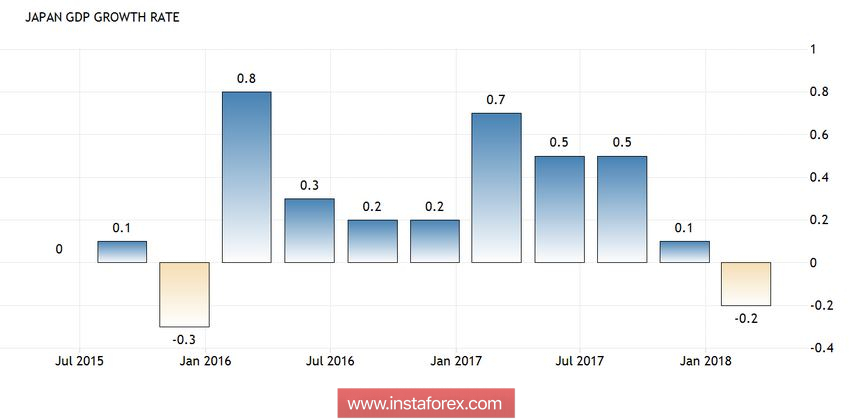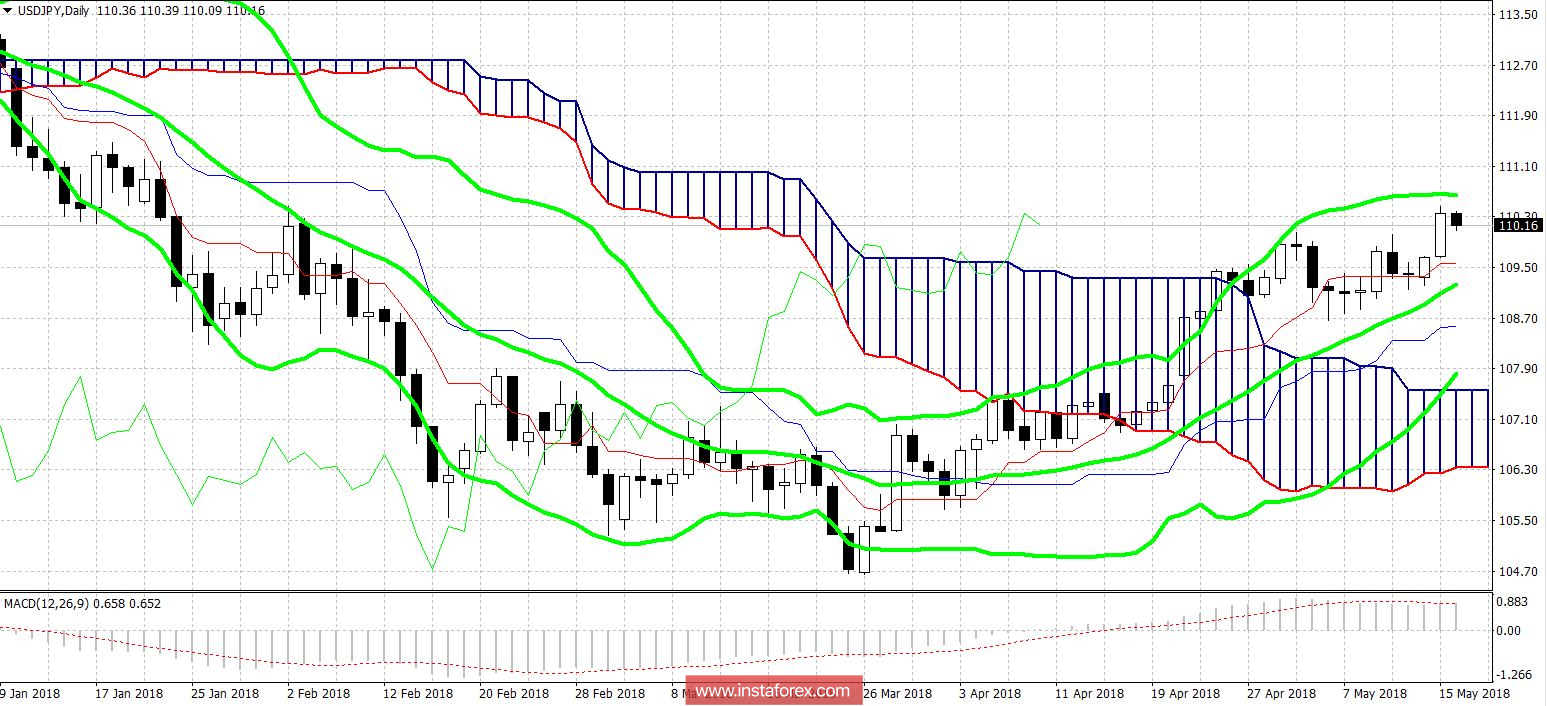The growth of the Japanese economy for the first time in the last nine quarters has slowed down. The GDP growth indicator collapsed into the negative area, reaching -0.2%. In addition, data on economic growth for the last quarter of last year were also significantly revised downward (from 1.6% to 0.6%). Such disappointing results indicate that the Central Bank of Japan will maintain a soft monetary policy for a long time, and the likely actions of the regulator will be aimed at expanding incentives.

In general, the experts did not expect any economic breakthrough. By all accounts, GDP in the first quarter should have reached zero, primarily due to a decrease in corporate spending due to an abnormally cold winter. But the release did not even reach such a weak prognosis, for the first time in a long time, having fallen into the negative area. On Friday, another important indicator will be published, the consumer price index. According to general expectations, the Japanese inflation will also show negative dynamics, first slowing down for four months.
However, judging by today's reaction of the market, traders do not care about the problems of the Japanese economy. The pair USD / JPY completely ignored the release of GDP, despite the negative consequences of the published figures. Moreover, the price is now gradually sliding down from the level of the local maximum. Therefore, with a high degree of probability, we can say that Friday's inflation data may also be left without investors' attention. The yen is now entirely subject to the dynamics of the US dollar and the external fundamental background.
After a temporary lull, greenback again showed character and yesterday dominated all dollar pairs. The yield of 10-year US government bonds has overcome not only the 3% barrier, but also the next resistance level (3.05%), thus renewing the 7-year maximum. The reason for the next impulse of growth was the release of data on the volume of retail trade in the United States. The indicator though turned out to be worse than forecasts, but still showed positive dynamics. In addition, the data for the previous month (from 0.6% to 0.8%) were revised upwards. The growth of consumer activity of Americans was very positively received by the markets. The probability of a fourfold increase in the rate increased to 55%, the yield of treasuries went up, and the dollar index renewed the annual maximum (93.4 points).
This morning, the US currency slowed its growth across the market. First, traders record profits, fearing too aggressive dynamics of the dollar, followed by a price pullback. Secondly, the geopolitical situation in the world has changed a little. North Korea issued a sharp statement, jeopardizing the nuclear disarmament deal, and China at the WTO accused Washington of the absurdity of requirements in the sphere of foreign trade.
These circumstances provoked a certain demand for protective tools. Pay attention to the dynamics of gold and franc. The yen also takes advantage of this situation. The external fundamental background serves as a kind of "anchor" for the pair USD / JPY. Bulls of the pair have already overcome and fixed above the key resistance level of 110, but for the development of the northern trend, appropriate conditions are necessary, primarily in the context of international political stability.
In other words, the dollar / yen pair was between the hammer and the anvil. On the one hand, the US currency is strengthening throughout the market. On the other hand, the demand for "quiet harbor" currencies is growing, and on the yen as well.
It is worth recalling that the dollar began to strengthen actively a month ago after news of the denuclearization of the DPRK. Then Greenback began to enjoy support from China, whose representatives agreed to sit down at the negotiating table with colleagues from the United States. Such tectonic shifts in the reduction of geopolitical tensions (especially after the heat at the beginning of the year) allowed the market to focus on the successes of the American housekeeper, on the expectations of the Fed's actions and on the growth of the Treasury yield.
But recent developments can shift the focus of the market to the previous fundamental factors. Kim Jong-Eun refused the planned talks with South Korea today, threatening to even disrupt the historic meeting with Trump, due in June. A formal occasion for such a statement is the joint military exercises of the United States and South Korea. Now, this issue remains in limbo, and, apparently, there are appropriate negotiations on closed communication channels.
US-China talks also "stalled". The first round of the dialogue ended in failure, and yesterday's speech by the representative of China to the WTO indicates that Beijing is still far from resolving trade disputes with Washington. Also, here it is worth remembering about Iran, with which China conducts active trade. This factor complicates and so a difficult equation.

Thus, China and the DPRK (and, in part, Iran) will determine the fate of the pair USD / JPY. If the demand for defensive assets grows, the yen will return to the price niche 108-109. Strong resistance level is the level of 110.60. This is the upper line of the Bollinger Bands indicator on the daily chart. If bulls USD / JPY can not overcome it impulsively, one can consider sales with the first price target of 109.50 (Tenkan-sen line on D1).
 English
English 
 Русский
Русский Bahasa Indonesia
Bahasa Indonesia Bahasa Malay
Bahasa Malay ไทย
ไทย Español
Español Deutsch
Deutsch Български
Български Français
Français Tiếng Việt
Tiếng Việt 中文
中文 বাংলা
বাংলা हिन्दी
हिन्दी Čeština
Čeština Українська
Українська Română
Română

